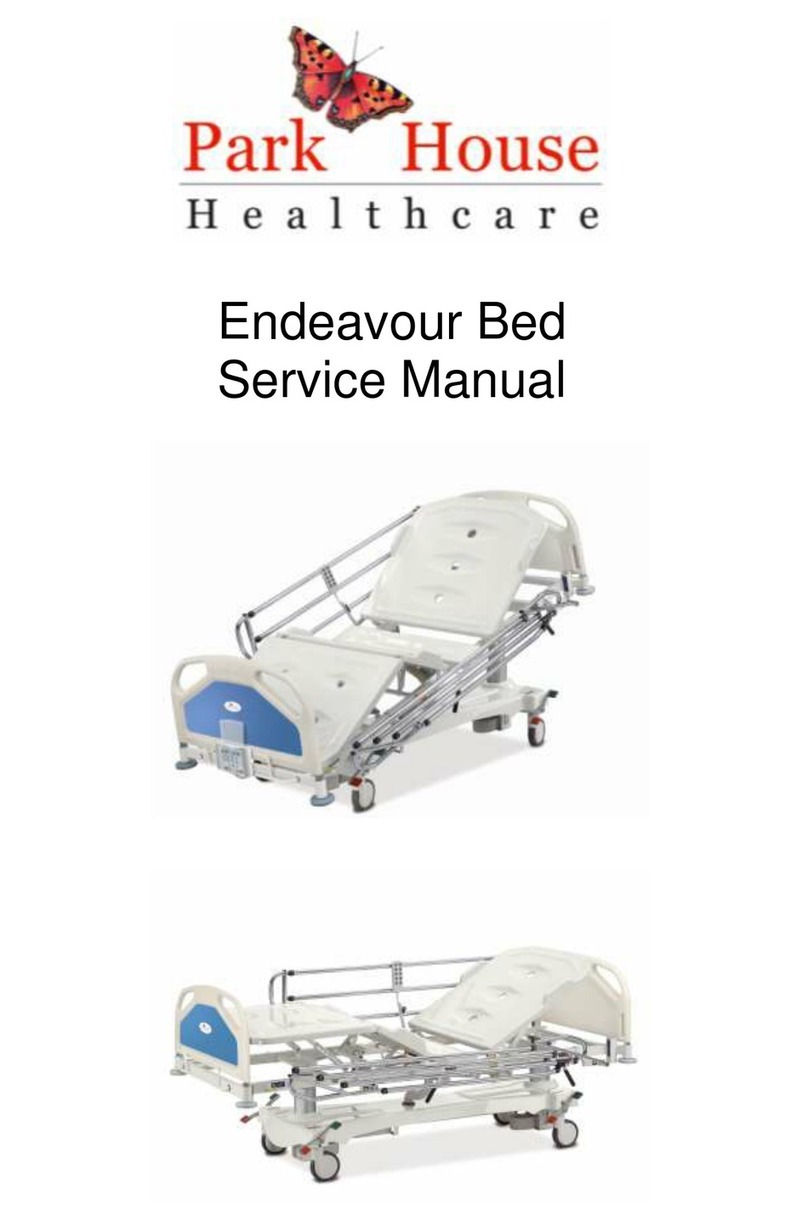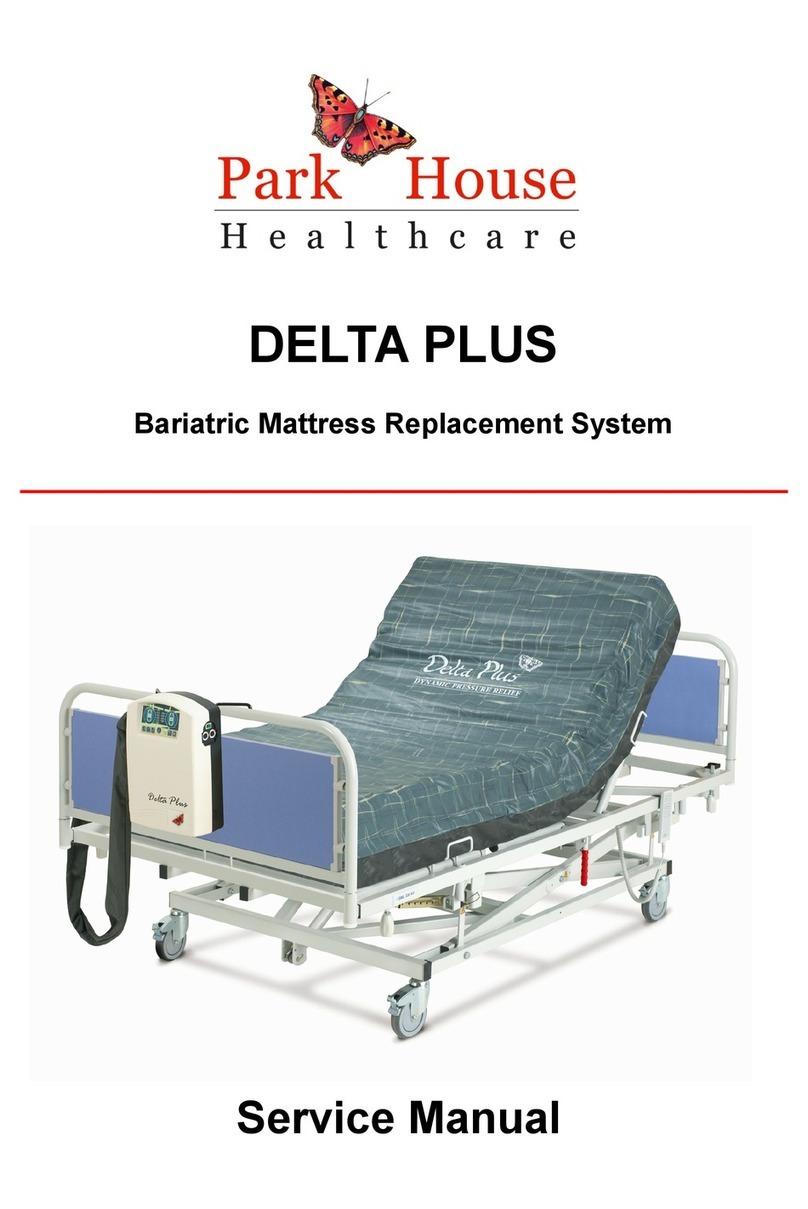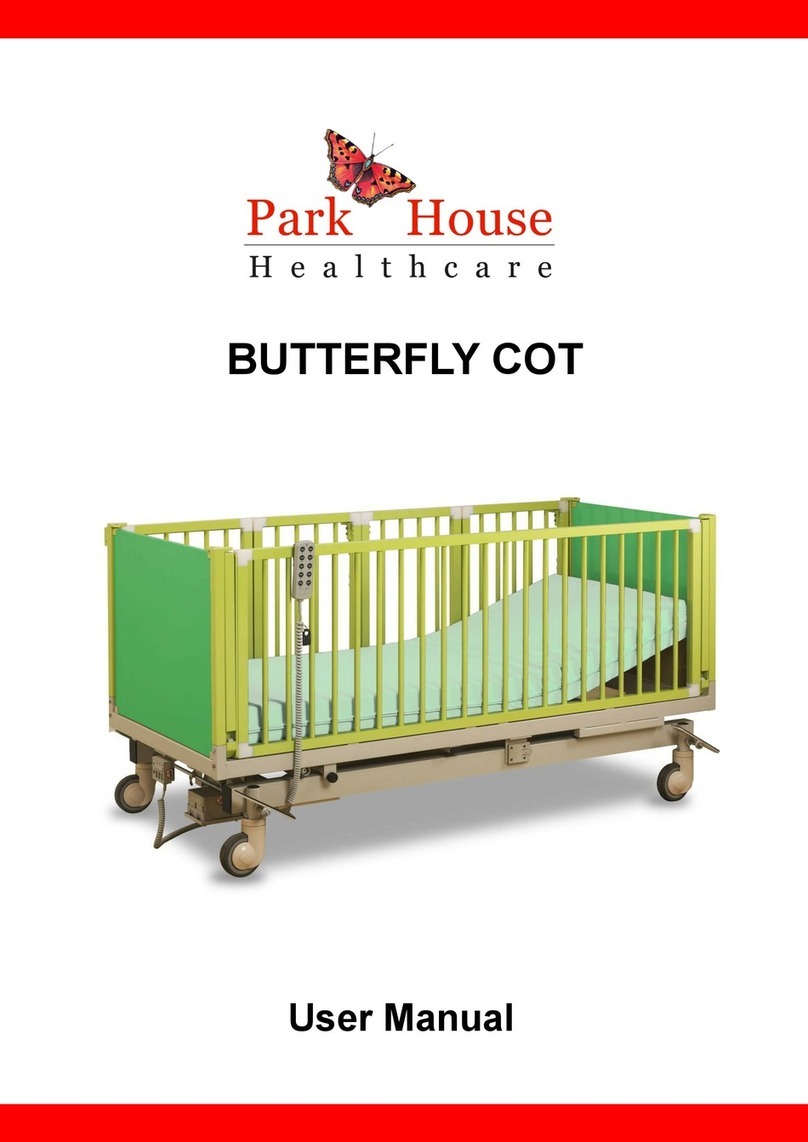
6. Additional Safety Information
All persons assembling or using the bed should have read the user manual
and familiarised themselves with its operation. Ensure that objects such as
waste paper baskets, occasional tables, chairs etc. are not placed
underneath the lifting mechanism of the bed.
To avoid injury, no limbs or body parts of either the occupant or carer must be
protruding from the bed, between the side rails or in the scissor mecanism of
the bed during operation of the powered functions. Before moving the bed to
a different location, remove the electrical plug from the 230v mains supply
power socket. Failure to do so may result in damage to the bed or fatal injury.
When moving the bed with occupant in situ, the bed should not be pushed
over a threshold strip of more than 2 cm maximum height. Under no
circumstances must the bed be moved by pulling or pushing the side rails,
either when the bed is occupied or empty. They are not designed for this
purpose. Never exceed the maximum usage period of 6 minutes per hour for
the electrically driven bed functions, by lengthy and unnecessary profiling or
height adjustments. This can trip the thermal safetly fuse, which will stop all
powered movement of the bed parts.
Once the bed is sited in the desired potion, always ensure
that the castors are locked in the braked position (see
illustration)
Before dismantling or troubleshooting
Ensure that all functions are in the lowered position (where possible), the
power supply is switched off and the power cable is disconnected from the
mains by un-plugging. Ensure that all functions are not under any undue load
and are free moving.
Before Operation
Ensure that assembly is completed fully, in accordance with the user manual.
Ensure that t he local electrical mains supply voltage corresponds to that
marked on the main control unit label before connecting to the mains supply.
Ensure that cables from all motors are connected to the main control unit
correctly before operation.
When maintaining and cleaning the bed in the space between undercarriage and
mattress platform, the adjustment functions on the handset must be locked so there
is no accident due to any unintentional activation and subsequent downward
movement of the mattress platform.
The mains cable must be placed in a way so it does not get wound round the mobile
parts or trapped between them; if the mains cable is damaged there is a serious
danger of injury from electrical current.
An inspection should be made at least once a month for visible wear and tear of all
mobile parts and cables.
The bed is intended for adults from 12 years of age. Ensure that children only have
access to the bed under adequate supervision. Do not allow children underneath
the bed while it is in operation.
This modular nursing bed has four electrically powered functions - back, knee,
break and height adjustment.
2. Features
The drives for the adjustment functions consist of electrical mechanical linear
motors with maintenance free permanent lubrication.
The motors are operated by a hand controller, which is connected to the main
control unit via a spiral wound cable.
The motors and hand controller are isolated from the mains voltage (230v) and
operated at DC 24v low voltage.
3. Installation
The Warwick Bed should only be assembled by a suitably competent person.
The fuse in the electrical mains plug should not exceed 5 amps.
The bed should be located on a level flat surface.
Do not site the bed on loose carpet, rugs or floor coverings.
The cable from the mains 230v power supply plug to the main control unit must be
positioned clear of the lift mechanisim (danger of shearing or crushing) and the
braked castors.
































